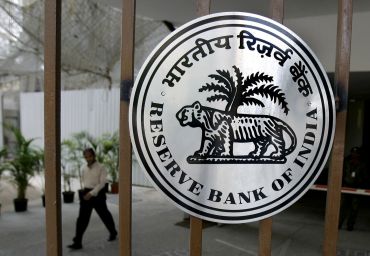
Wednesday's hawkish and essentially courageous decision underscores that Governor Urjit Patel will largely represent continuity, rather than a break, with the policies and approach of his predecessor, says Richard Iley.
The Reserve Bank of India has left its key policy rate unchanged at 6.25%. The decision was largely unexpected by markets but not by BNP Paribas (where I work).
We were in a small minority expecting unchanged policy rates. Three factors appear to have been key to the unchanged verdict.
First, the RBI is clearly cognisant of increased global uncertainty. 'Imminent tightening' by the US Fed, the risk of 'large spill-overs' to emerging markets and 'firmer oil prices' were all cited as reasons for policy caution.
Second, the stickiness of inflation, particularly 'core' inflation, was noted as 'disconcerting' and potentially generating a resistance level for future downward movements in inflation.
The RBI acknowledged inflation risks are skewed to the upside even before the full impact of the 7th Pay Commission on housing costs, let alone the likely inflationary impact of the Goods and Services Tax, have been factored in.
Third, the RBI sensibly decided to view demonetisation and the ensuing disruption to the economy as a largely 'transient' shock that, in the base case, does not warrant a formal policy response.
While GDP growth will clearly take a hit in the current quarter, growth can be reasonably expected to rebound smartly in the new year.
If the impact of demonetisation proves to be longer lasting and more pernicious, the RBI rightly left its options open to respond with easier policy at a later date.
Demonetisation has also inevitably generated severe liquidity management issues for the RBI, given the surge in bank deposits.
In a separate press release, the RBI confirmed the temporary expedient of the incremental reserve requirement increase that locked up over Rs 3 lakh crore of deposits and which helped re-anchor money market rates back towards the repo rate which will expire on December 10.
Management of excess liquidity will then revert back to the more orthodox use of reverse repos and issuance of market stabilisation scheme (MPC) securities until excess liquidity pressure fades, hopefully in the next few weeks.
Deputy Governor R Gandhi noted during Wednesday's press conference that around Rs 12 lakh crore of the Rs 14.5 lakh crore of bank notes have now been returned, signalling their expectation that liquidity shock is now close to abating.
Wednesday's hawkish and essentially courageous decision underscores that Governor Urjit Patel, supported by the new MPC structure, will largely represent continuity, rather than a break, with the policies and approach of his predecessor.
Most importantly, assuming the demonetisation shock does indeed fade quickly heading into 2017, global and domestic factors dictate that there is little, if any room, for any further policy easing.
Accordingly, the decision is likely to be the first in a long string of decisions that leave policy settings unchanged.
Richard Iley is Managing Director, Asia Macro Equity -- Economic Research, Fixed Income, BNP Paribas Corporate & Investment Banking.











